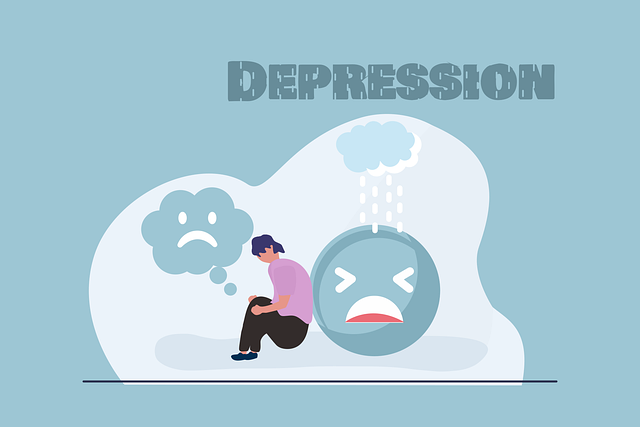In today’s fast-paced, stress-filled world, mental health has become a growing concern. Anxiety, depression, burnout, and chronic stress are increasingly common, affecting millions of people globally. While therapy, medication, and self-care practices play crucial roles in managing mental health, one of the most accessible and effective tools often goes overlooked: exercise .
Physical activity isn’t just about building muscle or improving cardiovascular health—it’s also a powerful antidote to mental health challenges. From boosting mood to reducing symptoms of anxiety and depression, exercise offers profound benefits for the mind as well as the body. In this article, we’ll explore the science behind how exercise supports mental well-being and provide practical tips to incorporate movement into your daily life.
The Science Behind Exercise and Mental Health
When you exercise, your brain undergoes significant changes that positively impact your emotional state. Here’s how it works:
- Endorphins and the “Runner’s High”: Exercise triggers the release of endorphins—natural chemicals that act as painkillers and mood enhancers. These “feel-good” hormones create a sense of euphoria, commonly referred to as the “runner’s high,” which can alleviate feelings of sadness or stress.
- Neurotransmitter Regulation: Physical activity increases the production of neurotransmitters like serotonin, dopamine, and norepinephrine, all of which play key roles in regulating mood, motivation, and focus. Low levels of these chemicals are often linked to depression and anxiety.
- Reduced Inflammation: Chronic inflammation has been linked to mental health disorders. Regular exercise helps reduce systemic inflammation, promoting better brain function and resilience against mood disturbances.
- Neurogenesis and Brain Plasticity: Exercise stimulates the growth of new neurons in the hippocampus, the part of the brain responsible for memory and learning. This process, known as neurogenesis, enhances cognitive function and may protect against age-related decline and mental health issues.
- Stress Hormone Management: Physical activity lowers cortisol levels, the hormone associated with stress. By reducing cortisol, exercise helps calm the nervous system and fosters relaxation.
Key Mental Health Benefits of Exercise
1. Reduces Symptoms of Depression and Anxiety
Numerous studies have shown that regular exercise can be as effective as antidepressant medications or psychotherapy for mild to moderate depression. Aerobic exercises like running, swimming, and cycling, as well as strength training, have been found to significantly reduce symptoms of anxiety and depression by improving mood and increasing resilience.
2. Boosts Self-Esteem and Confidence
Achieving fitness goals—whether it’s running a mile, lifting heavier weights, or mastering a yoga pose—can boost self-esteem and foster a sense of accomplishment. Feeling stronger and more capable physically often translates to greater confidence mentally.
3. Improves Sleep Quality
Poor sleep is both a cause and consequence of poor mental health. Exercise helps regulate your circadian rhythm, reduces insomnia, and promotes deeper, more restorative sleep—all of which contribute to better emotional regulation.
4. Enhances Cognitive Function
Exercise improves concentration, memory, and problem-solving skills by increasing blood flow to the brain and promoting the release of growth factors that support neural connections. This makes it especially beneficial for students, professionals, and older adults looking to maintain sharp minds.
5. Provides a Healthy Coping Mechanism
Instead of turning to unhealthy coping strategies like substance abuse or emotional eating, exercise offers a constructive outlet for stress and negative emotions. Whether it’s pounding the pavement during a tough run or flowing through a calming yoga session, movement allows you to channel energy productively.
6. Encourages Social Connection
Group activities like team sports, dance classes, or walking clubs not only keep you active but also provide opportunities for social interaction. Building relationships and feeling connected to others is vital for combating loneliness and fostering mental well-being.
Types of Exercise for Mental Health
Not all forms of exercise affect mental health equally, but any form of movement is better than none. Here are some types of exercise particularly beneficial for mental well-being:
1. Aerobic Exercise
Activities like jogging, cycling, swimming, and dancing elevate your heart rate and increase oxygen flow to the brain. Aerobics are especially effective at reducing symptoms of anxiety and depression due to their ability to release endorphins and improve overall mood.
2. Strength Training
Lifting weights or doing bodyweight exercises like push-ups and squats builds physical strength while simultaneously enhancing mental fortitude. Studies show that resistance training can reduce symptoms of depression and improve self-confidence.
3. Mind-Body Practices
Yoga, tai chi, and Pilates combine movement with mindfulness, helping to quiet the mind and reduce stress. These practices emphasize breathing techniques and meditation, making them ideal for managing anxiety and promoting relaxation.
4. Outdoor Activities
Exercising in nature—such as hiking, gardening, or simply taking a walk in the park—has additional mental health benefits. Being surrounded by greenery and fresh air boosts mood, reduces stress, and fosters a sense of peace.
5. High-Intensity Interval Training (HIIT)
For those short on time, HIIT workouts involve short bursts of intense effort followed by brief recovery periods. This type of exercise is highly efficient at burning calories and releasing endorphins, making it a great option for quick mood boosts.
How Much Exercise Do You Need?
You don’t need to spend hours at the gym to reap the mental health benefits of exercise. The World Health Organization (WHO) recommends:
- At least 150 minutes of moderate-intensity aerobic activity (like brisk walking) per week, or
- 75 minutes of vigorous-intensity activity (like running), combined with muscle-strengthening activities on two or more days a week.
Even small amounts of movement count. Taking a 10-minute walk, stretching during TV commercials, or doing a quick home workout can make a difference.
Tips for Staying Consistent
Starting an exercise routine is one thing; sticking with it is another. Here are some tips to help you stay motivated:
- Find Something You Enjoy: If you dread your workouts, you’re less likely to stick with them. Experiment with different activities until you find what feels fun and fulfilling.
- Set Realistic Goals: Start small and gradually build up. For example, aim to walk 10 minutes a day and increase over time.
- Create a Routine: Schedule exercise into your day like any other appointment. Consistency is key.
- Mix It Up: Avoid boredom by varying your workouts. Try new classes, switch between cardio and strength training, or explore outdoor activities.
- Use Technology: Fitness apps, wearable trackers, and online videos can provide guidance, accountability, and inspiration.
- Buddy Up: Exercising with a friend or joining a group class adds a social element and keeps you accountable.
- Focus on How It Feels: Pay attention to the immediate mental benefits of exercise, such as reduced stress or improved mood, rather than long-term outcomes like weight loss.







